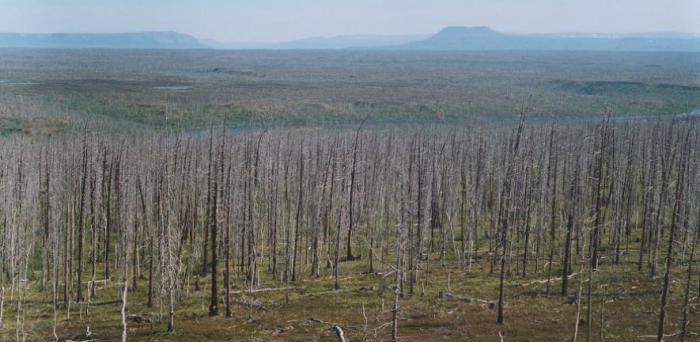An international team of researchers, led by the University of Cambridge, has combined ring width and wood chemistry measurements from living and dead trees with soil characteristics and computer modelling to show that the damage done by decades of nickel and copper mining has not only devastated local environments, but also affected the global carbon cycle.
The extent of damage done to the boreal forest, the largest land biome on Earth, can be seen in the annual growth rings of trees near Norilsk where die off has spread up to 100 kilometres. The results are reported in the journal Ecology Letters.
Norilsk, in northern Siberia, is the world’s northernmost city with more than 100,000 people, and one of the most polluted places on Earth. Since the 1930s, intensive mining of the area’s massive nickel, copper and palladium deposits, combined with few environmental regulations, has led to severe pollution levels. A massive oil spill in May 2020 has added to the extreme level of environmental damage in the area.
Not only are the high level of airborne emissions from the Norilsk industrial complex responsible for the direct destruction of around 24,000 square kilometres of boreal forest since the 1960s, surviving trees across much of the high-northern latitudes are suffering as well. The high pollution levels cause declining tree growth, which in turn have an effect of the amount of carbon that can be sequestered in the boreal forest.
However, while the link between pollution and forest health is well-known, it has not been able to explain the ‘divergence problem’ in dendrochronology, or the study of tree rings: a decoupling of tree ring width from rising air temperatures seen since the 1970s.
Image: Forest decline east of Norilsk
Credit: Dr Alexander Kirdyanov
Reproduced courtesy of the University of Cambridge
